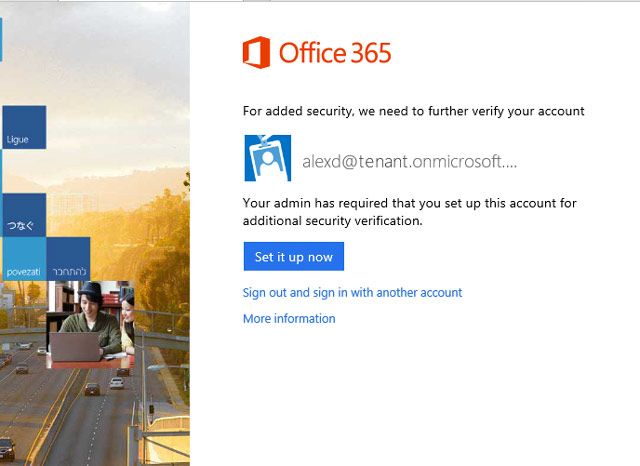Microsoft has finally given users some peace of mind by introducing optional multi-factor authentication in Office 365. In the same announcement, the company said the feature will arrive in Office 2013 this year. The feature is a no-cost "update" and covers all Office 365 variants and subscriptions -- Office 365 to Office 365 Midsize Business, Enterprise plans, Academic plans, Nonprofit plans, and standalone Office 365 plans.
Multi-factor authentication adds another layer of security to the login by requiring a second validation after the initial password. It establishes the user is genuine with a phone call, text message, or an app notification on their smartphone after the correct password is entered.
With Microsoft's renewed attention on cloud services, enhanced security measures are paramount for everyday users and high-demand business users. Here's the gist of how to configure multi-factor authentication. The step-by-step instructions can be found on the linked source blog.
- Office 365 administrators will need to sign-into the Office 365 Admin Panel and enroll users for multi-factor authentication.
- The multi-factor authentication page lists the users with user names and their status.
- The user signs in and is prompted to set up their second authentication factor (phone call, text message, app notification, or one-time code).
- Smartphone apps are available for Windows Phone, iPhone, and Android devices for uses who opt for the app notifications or one-time code.
Office 365 users enrolled for multi-factor authentication have the facility of using App Passwords in the Office Desktop applications. It is more secure than the usual user password and is a stand-in security measure until the desktop apps also get two-factor authentication. An App Password is a 16-character randomly-generated password that can be used with an Office client application as a way of increasing security in lieu of the second authentication factor. You can use the same password with multiple desktop apps or create a password for specific apps.
Are you an Office 365 user? Does this security measure ease some of your worries?
Source: Office Blog


